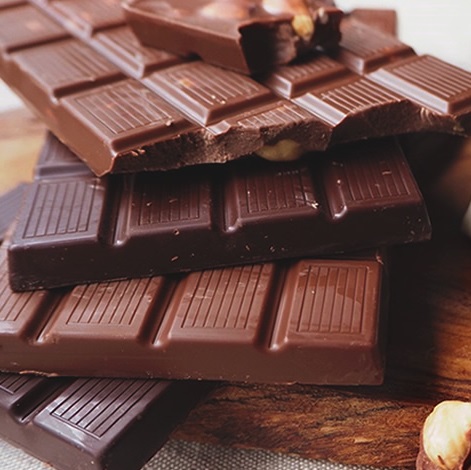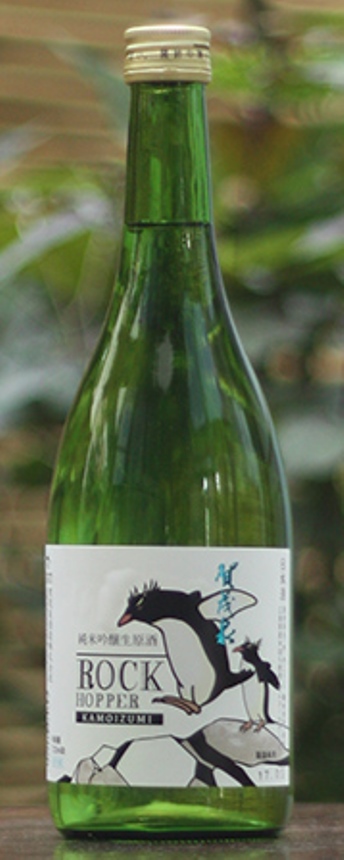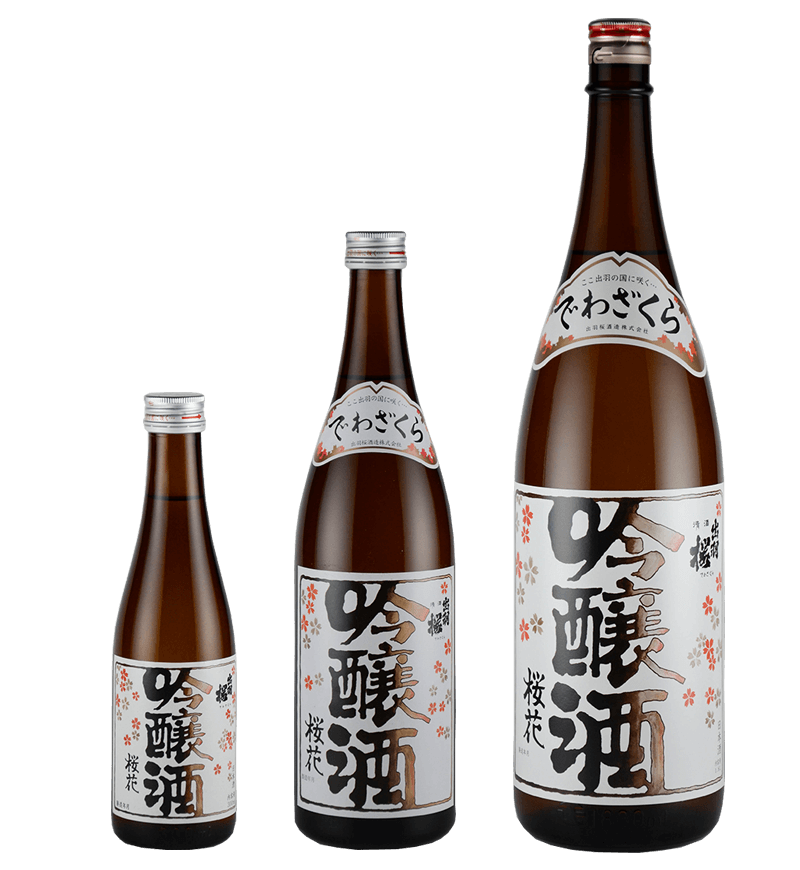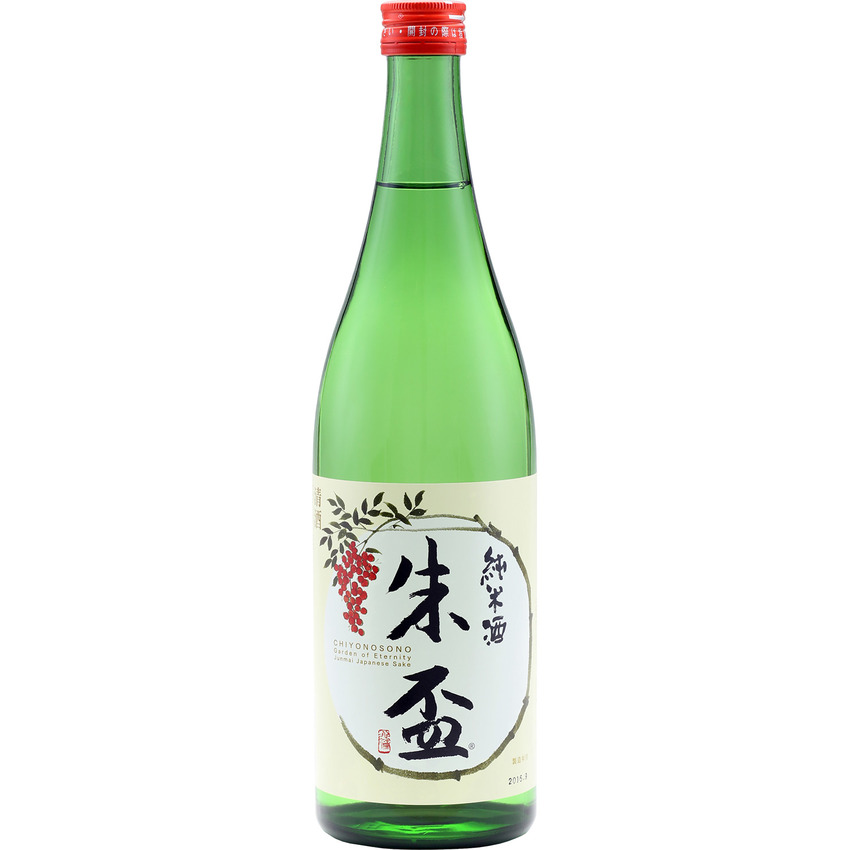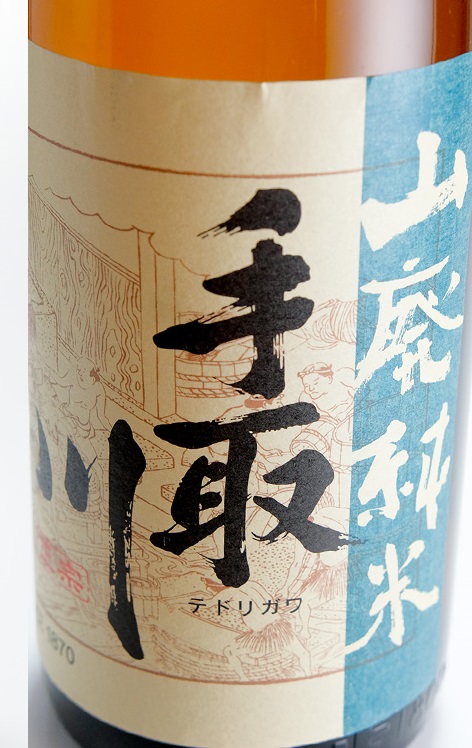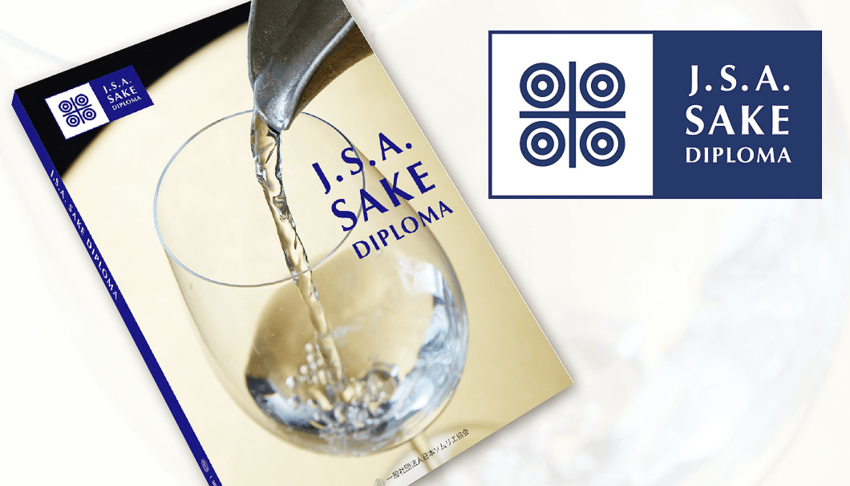Hashtag "#japanesesake" returned 100 results.

By Yuji Matsumoto
Japanese sake is still a largely unfamiliar beverage to American consumers.
Ninety percent of sake is consumed in restaurants, indicating the unfortunate reality that sake is still far from being casually enjoyed in private homes and parties.
One of the reasons is because the true flavors of sake and how they’re enjoyed is not widely introduced. Therefore, to American diners, sake is still a unique beverage to be enjoyed at local sushi bars. Also, because the prices can be at times higher, products may not be lined visibly on store shelves and information may be lacking on labels, which may be contributing to this issue.
In this issue, I will give you a simple overview of how to select sake.
First, it’s important to decide what menu selections to enjoy the sake with. Similar to how wine enhances the foods you eat, sake is also to be enjoyed during meals.
Meat dishes: Junmai or Junmai Kimoto is recommended (from Kyushu, Tohoku, Kanto, Hokuriku or Nada regions)
Chicken dishes: Ginjo class (from Hiroshima, Niigata, Nada, Hokuriku, and Kanto regions) is recommended
Fish dishes: Ginjo and Daiginjo class (Niigata, Hiroshima, Shikoku, Kyoto regions) are recommended.
Of course, flavoring and preparation methods will influence your choice of sake, but first, it would be interesting to sample sake by region.
日本酒を気軽に楽しむ
日本酒は、まだまだアメリカ人にとって馴染みの薄い飲み物である。
日本酒の消費の9割はレストランであり、まだまだ家庭やホームパーティーで気軽に楽しむ飲み物には、残念ながらなっていない。
その理由の一つに、まだまだその本当の味や飲み方が紹介されていないため、日本酒(サキ)はアメリカ人にとってスシバーに行った時に飲む特殊な飲料の位置づけがあるためであろう。また、価格も高く、マーケットでの商品陳列方法やラベル情報が乏しいのもその原因であろう。
さて、今回は大雑把ではあるが、日本酒の簡単な選択方法をお教えしよう。
まず、合わせたい料理は何かを決めることが重要。日本酒は、ワインと同じく料理を引き立てる食中酒だと理解していただきたい。
牛肉料理:純米や純米生もと造り(九州、東北、関東、北陸、灘産)がお勧め。
鶏肉料理:吟醸クラス(広島、新潟、灘、北陸、関東産)がお勧め。
魚料理:吟醸クラス、大吟醸クラス(新潟、広島、四国、京都産)がお勧め。
もちろん、味付け、調理方法によって合わせる酒は異なってくるが、とりあえずは、産地によって試してみるのは面白いのでは。

By Ayaka Ito
An event of pairing of Japanese sake and chocolate was held. The chocolate for this event was picked from the selection from Dandelion Chocolate shop, one of the very few places in the world, where craft chocolate is made from single-origin cacao beans. The chocolate bars of Dandelion Chocolate are made with only cacao beans and cane sugar, and do not contain cocoa butter or vanilla essence. Their unique flavors come from natural cacao beans produced by fermentation and roasting. For this event, 4 kinds of chocolate were ordered from their main shop in San Francisco.
Pairing details
1. Piura Blanco, Peru and Ouka, Ginjo, Yamagata Prefecture
Tasting note: Green grapes and maple
In this pairing, the acidity of green grapes and the aroma and sweetness of Ouka go well together, and make both taste so much better than when tasted individually.
2. Kokoa Kamili, Tanzania and Shuhai, Junmai, Kumamoto Prefecture
Tasting note: Mango and citrus
In this pairing, the citrus flavor in the chocolate, combined with Shuhai’s citrus fruit-like aroma that resembles orange flowers and subtle sweetness, create a good harmony.
3. Mantuano, Venezuela and Tedorigawa, Yamahai, Ishikawa Prefecture
Tasting note: Roasted almonds, chocolate fudge, and sea salt
Pairing with Tedorigawa brings out the richness of chocolate produced by the roasting of beans, and gently embraces it.
4. Maya Mountain, Belize and Kamoizumi, Junmai-Ginjo undiluted sake, Hiroshima Prefecture
Tasting note: Honey, caramel, and creamy strawberries
Since this sake is undiluted, it has natural freshness and richness at the same time, and the flavor of creamy strawberries is enhanced by being combined with this sake.
The Piura Blanco’s tasting note says green grapes and maple. When I tasted the chocolate by itself, I tasted some unique acidity, which I did not care for, however, when it was combined with Ouka of Dewazakura Brewery, a marvelous harmony was created by added gracious aroma and tender sweetness of Ouka. On the contrary, when combined with sweet and sour chocolate called Ambanj, whose flavor reminded me of refreshing citrus, and strawberry or raspberry jam, the acidity of the chocolate contradicted with Ouka’s clean after-taste, and I couldn’t say it was a good pairing. Two different tastes make a harmony and create the third taste. That is the best part of pairing. I feel excited as if I am going to explore an unknown world. I urge everyone to try pairing sake with familiar ingredients and food items around you! You might discover things unexpected!
日本酒とチョコレート
日本酒とチョコレートのペアリングを開催しました。チョコレートはシングルオリジンのカカオ豆からチョコレートを作る、世界でも数少ないクラフトチョコレートのお店、ダンデライオン•チョコレートからセレクト。ダンデライオン•チョコレートのチョコバーは、カカオ豆ときび砂糖からのみ作られており、ココアバターやバニラエッセンス等は入っておらず、特徴のある風味は、発酵と焙煎によってつくり出された、カカオ豆本来の味わいからきています。今回は4種類のチョコレートをサンフランシスコ本店よりオーダーしました。
ペアリングの詳細
①Piura Blanco, Peruと桜花 吟醸 山形県
テイスティングノート:青ブドウとメープル
青ブドウの酸味と桜花の香りと甘みがマッチして、個々で食べるよりも一緒に食べた方が何倍も美味しくなるペアリング。
②Kokoa Kamili, Tanzaniaと朱盃 純米 熊本県
テイスティングノート:マンゴーとシトラス
チョコレートに含まれるシトラスな味わいとオレンジの花を思わせる柑橘系の朱盃の香りとほのかな甘みが調和したペアリング。
③Mantuano, Venezuelaと手取川 山廃純米 石川県
テイスティングノート:ローストアーモンド、チョコレートファッジ、シーソルト
手取川と合わせることで、チョコレートの焙煎によって生まれたコクを引き出し、まろやかに包み込んでくれます。
④Maya Mountain, Belizeと賀茂泉 純米吟醸生原酒にごり 広島県
テイスティングノート: ハチミツとキャラメル、クリーミーな苺
生原酒にごりなので、フレッシュさと芳醇さを持ち合わせており、一緒に合わせることでお酒がクリーミー苺の味わいをより引き立たせてくれるペアリング。
Piura Blancoのテイスティングノートは青ブドウとメープルで、チョコだけで食べると独特な酸味があり、あまり好みの味ではありませんでしたが、出羽桜の桜花と合わせると桜花の持つ華やかな香りと優しい甘みが加わり、素晴らしい調和をみせてくれました。それとは逆にAmbanjaという爽やかなシトラスと苺やラズベリージャムを思い出させる甘酸っぱいマダガスカル産のチョコレートと合わせてみると、チョコレートの酸が桜花のスッキリとした後味と反発してしまい、あまり相性がいいペアリングとは言えませんでした。2つの味わいが調和し、第3の味わいが生まれる。これこそがマリアージュの醍醐味であり、道なる世界への探検のようでワクワクします。皆さんも身近な食材や食べ物を日本酒に合わせてペアリングしてみると、意外な発見があるかもしれないので、是非試してみて下さいね。

![NHK News Progra...]()
NHK News Program “Today’s Close-up”
By Kosuke Kuji
Japanese sake is a central product in “Cool Japan Strategy” implemented by the Japanese government and increasingly featured recently by many media outlets both domestically and abroad.
One such program is a very popular TV program on NHK, “Today’s Close-up” (
https://www.nhk.or.jp/gendai/).
NHK “Close-up Today” is a news program that features social problems to the latest trends garnering much attention. This program delves deep into one theme at a time to report on the latest “today” on many themes domestically and abroad to date.
“Today’s Close-up” covered Japanese sake in November 2019.
I was interviewed in this program along with sake brewers expanding from Japan into the world market, American nationals producing sake in New York, and Japanese nationals producing sake in France, introducing the latest “today” surrounding Japanese sake from various angles.
Through meticulous interviews, many conducted overseas, this program features how Japanese sake is popularized worldwide, along with commentary on the future outlook for Japanese sake.
Studio guests included the chairman of the Japan Sommelier Association, very knowledgeable about Japanese sake; Shinya Tasaki, who started the “Sake Diploma” certification for Japanese sake with the Japan Sommelier Association; and various messages about Japanese sake.
Among these guests, the chief executive officer of “Dom Pérignon” took on the challenge to produce Japanese sake in Toyama City showed how Japanese sake is becoming more familiarized worldwide.
酒豪大陸「NHKクローズアップ現代プラス」
日本酒は日本政府が推し進める「クールジャパン戦略」でも中心的な位置にいいます。そんな日本酒ですが、最近は日本国内外のマスコミでも大きく取り上げられることが増えてきました。
その1つがNHKでも大変人気の番組「クローズアップ現代プラス」(
https://www.nhk.or.jp/gendai/)です。
この番組は社会問題から注目のトレンドまで、ひとつのテーマを掘り下げ、「いま」を伝える報道情報番組であり、多くの日本内外の話題を取り上げてきました。
2019年11月にはこのクローズアップ現代プラスで日本酒が取り上げられました。
私も出演させていただきましたが、この番組は日本から世界へ挑戦する蔵元の私や、アメリカニューヨークでSAKEを造るアメリカ人、フランスでSAKEを造る日本人など、様々な角度で日本酒の「いま」を取り上げてくれました。
綿密な取材と、海外での取材も多数行っており、日本酒が今世界でどのような形で浸透しているか、また日本酒の今後の未来についても語られています。
スタジオゲストは日本ソムリエ協会の会長でもあり、日本酒に大変造詣が深く、日本ソムリエ協会で日本酒の資格「サケディプロマ」を立ち上げた田崎信也会長が出演して、多くの日本酒に関するメッセージを出してくれました。
その中でもシャンパン「ドンペリ」の醸造最高責任者が富山で日本酒造りに挑戦する話題は、まさに日本酒のワールドワイドな姿を見せてくれました。

Where you can most likely predict the taste of wines from grape variety, vintage or production area, there is no standard to evaluate the taste of Japanese Sake.
There is an identification of Daiginjo, Ginjo, Junmai etc based on production method, but this is only the production method and doesn't indicate the compatibility with taste or dish. Also, if you look at the ingredients of rice or water, you can slightly distinguish the taste or aroma, but the taste will change depending on how you make it.
Regarding the compatibility with food, there is absolutely no way of seeing it from the label indication that is legally required as of today.
I would like to show you something from the label that may give you a hint even though it might be a slight amount.
Junmai: many can be enjoyed chilled or hot and goes well with a slight rich tasting dish or grilled item
Ginjo: most served chilled, has characteristic of splendid aroma and goes well with dishes that are topped with citrus items like yuzu or lemon ; for example, yakitori with lemon or ponzu with hamachi (young yellowtail) with ponzu etc.
Daiginjo: has considerable body and goes well with teriyaki or eel sauces or nikomi (hotpot with vegetables and/or meats/fishes). light body Daiginjyo goes well with dishes that use citrus items like Ginjo.
California made sakes: since it has slight acidity and body, it goes well with Mexican food.
Kimoto or Yamahai class sakes: goes extremely well with beef or pork dishes
---
日本酒の料理相性判断
ワインのように葡萄の品種、ヴィンテージや産地により大体の味を予測できるのに対して日本酒には、味を評価するための基準になるものがない。
大吟醸、吟醸、純米などの製法による識別はあるが、これはあくまでも製法であって、味や料理との相性を暗示するものではない。また、原料の米や水をとっても、若干の味や香りを判断することはできるが、これもどういう造りをするかで味も変わってくる。フードとの相性に関しては、現在の義務付けられているラベル表示からでは、全く読み取れない。
多少ではあるが、ラベルからヒントになるものをお教えしたい。
純米酒:冷から燗まで飲めるものが多く、多少の味の濃い料理や焼き物に合う。
吟醸酒:主に冷で、華やかな香りが特徴で柑橘類、柚子やレモンをかけられる料理との相性がよい、焼き鳥にレモン、ハマチの刺身とポン酢など。
大吟醸酒:結構ボディーのある大吟醸酒は、照り焼きやうなぎソース、煮込みなどと相性がよい。ボディーの軽い大吟醸は、吟醸酒同様柑橘系との料理に相性がよい。
カリフォルニア産酒:若干酸味とボディーがある分、メキシカン料理にもあう。
キモトや山廃系:牛や豚肉料理との相性が抜群によい。
---
日本清酒與食物的相容性判斷
葡萄酒可以根據葡萄品種、年份和地區大致預測口味,但清酒則沒有評估口味的標準。
儘管大吟釀,吟釀,純米等的生產方法有所區別,但這僅是一種生產方法,並不意味著其口味或與料理的相容性。即使可以根據使用作為原料的大米或水來判斷出一點味道和香氣,但是味道也會根據製作方式而變化。關於與食物的相容性,由目前的強制性標籤根本無法讀取。
儘管不多,但我也想告訴您一些從可以從標籤中讀到的提示。
純米酒:從冷到熱飲皆可種類繁多,並且適合味道略為濃郁的菜餚和燒烤菜餚。
吟釀酒:以冷飲為主,散發著濃郁的香氣,可與柑橘,柚子和檸檬味的料理搭配,如沾了檸檬的烤雞肉串、鰤魚生魚片和柚子醋等。
大吟釀酒:酒體飽滿豐厚的大吟釀酒,可以搭配照燒鰻魚醬和燉肉等料理。
酒體輕盈的大吟釀酒,跟吟釀酒一樣適合搭配柑橘類菜餚。
加州酒:略帶酸味和有一定口感的酒體,也可以搭配墨西哥美食。
Kimoto(生酛)和山廢:與牛肉和豬肉菜餚非常相配。
---
니혼슈(일본술)와 궁합이 좋은 요리 판단
와인은 포도의 품종, 빈티지, 산지에 따라 대략적인 맛을 예측할 수 있지만, 일본주에는 맛을 평가하는 기준이 없습니다.
다이긴죠, 긴죠, 준마이 등 제조 방식에 따라 구별이 가능하지만, 이는 어디까지나 만드는 방식일 뿐 맛과 요리와의 궁합을 나타내는 것은 아닙니다. 또한, 원료인 쌀과 물 역시 약간의 맛과 향을 판단하는 기준이 되기는 하지만, 이 역시 어떤 제조 방식을 사용하는가에 따라 맛이 달라집니다. 현재 의무화된 라벨 표시로는 음식과의 궁합을 전혀 알 수 없습니다.
준마이슈(純米酒): 5~10℃(히야, 冷)에서 30~40℃(누루칸, 燗) 정도의 온도로 마시는 경우가 많고, 다소 맛이 강한 요리나 구이와 잘 어울립니다.
긴죠슈(吟醸酒): 주로 차갑게 마시고, 화사한 향이 특징입니다. 감귤류, 유자, 레몬을 뿌리는 요리와 궁합이 좋습니다. 닭꼬치구이에 레몬, 방어회와 폰즈 소스 등과도 잘 어울립니다.
다이긴죠슈(大吟醸酒): 바디감이 묵직한 다이긴죠슈는 데리야키나 장어 소스, 조림 등과 궁합이 좋습니다. 바디감이 가벼운 다이긴죠슈는 긴죠슈와 마찬가지로 감귤류 요리와 잘 어울립니다.
캘리포니아산: 약간의 산미와 바디감이 있어 멕시코 요리와도 잘 어울립니다.
기모토(生酛)와 야마하이(山廃) 계열: 소고기나 돼지고기 요리와 찰떡궁합입니다.

By Kosuke Kuji
While many consumers don’t know the term ‘vegan,’ many vegan restaurants are now starting to open in Tokyo in recent years.
I was sensitive to the term Vegan since I coordinated the sake Nanbu Bijin to be certified as vegan. However, I was surprised to learn a restaurant inside the “Kisarazu Outlet” in Kisarazu city, Chiba prefecture was serving vegan cuisine for a limited time.
Although vegan cuisine is not yet widely known among general consumers (in Japan), I meet many vegan consumers, vegan-leaning consumers, and vegetarians overseas.
I understood this to be the ‘natural’ approach and custom when my fellow vegan promoters introduced me to the smart phone app, “HAPPY COW.”
This app registers vegan, vegetarian, halal, and kosher restaurants in Japan and worldwide for consumers to find restaurants that meets one’s specified conditions in a glance.
I tried this app in Japan, but recently, many restaurants are getting registered.
Using this recent technology as a weapon, I would like to introduce to consumers that Japanese sake is in fact ‘vegan.’
While some vegan products consist of wine and beer, I believe most Japanese sake brands can obtain vegan certification. I think if we all get vegan certified, we can promote the understanding that “Japanese sake is vegan,” which will start a new era. I would like to continue our efforts dreaming of this day.
「日本のヴィーガンレストランの状況」
日本ではヴィーガンという言葉すら知らない人が多いのですが、ここ数年で、東京を中心にヴィーガン食を出すレストランが増えてきました。
私もヴィーガン認定を南部美人で調整していた関係で、ヴィーガンという言葉には敏感でしたが、驚いたのは千葉県木更津市の「木更津アウトレット」の中にあるレストランでヴィーガン食を限定でしたが出すレストランがあった事に驚きました。
日本ではまだまだ広く一般に知られていないヴィーガンですが、海外に行くと大変多くのヴィーガンの方々、ヴィーガンライクの方々、そしてベジタリアンの方々にお会いします。
そしてそれが「当たり前」の考え方と習慣なんだ私は理解していました。
そんな中、ヴィーガンを推し進める仲間から教えてもらったスマホアプリが「HAPPY COW」でした。
これは、日本はもちろん、世界中のヴィーガン、ベジタリアン、ハラル、コーシャなどのレストランが英語で登録されていて、一目で自分の条件にあうレストランを見つけることが出来ます。
日本でも試してみましたが、ここ最近は登録するお店が多くなってきました。
こういった現代の最新の武器を使いながら、日本酒が「ヴィーガン」であることを、もっと多くの方々に伝えて行きたいです。
ワインやビールも一部ヴィーガンがありますが、日本酒はほとんど全てのお酒がヴィーガンの認証を取れると私は思っています。みんなでヴィーガンの認証を受ければ世界中の目は「日本酒ってヴィーガンなんだね」となります。そうなるとまた違った時代を迎えます。そんな時代を夢見てさらに頑張っていきたいと思います。

Sake Tasting
by Yuji Matsumoto
Experience and knowledge are indispensable for sake tasting, but doing many tastings absent-mindedly does not help.
Many tend to think that a person must have an excellent sense of judging taste (to have people think that way is very flattering), but that isn’t necessarily so. Also, those who wish to become a sake sommelier seem to think that one must keep on trying different types of sake.
To be able to taste sake, the most importing to do is to identify and set your own tasting criteria. The criteria are not based on one’s preferences, so one must find the foundation that become the basis for judging various sake. One must have that foundation in place to be able to recognize aroma, acidity, body and umami, that different types of sake have. Knowledge and information that you gather would supplement that to help correctly and fairly assess sake products.
So how can one establish that foundation for establishing your own tasting criteria? Here is the quickest and least expensive way of doing it, based on my own experience.
First, buy low-priced sake at a store. Try it every day for 15 days, even if you don’t like it or it’s simply horrible (some people may need 20 days). Do not drink it until it makes you drunk. It’s most important that you drink a certain amount every day, even if it’s just enough to fill an ochoko (tiny sake cup). Do not try other sake while you’re trying one.
Stop for two to three days to rest your liver, then do a tasting of a different sake. You will probably realize that you can profile the sake to surprising details. The differences in acidity, the body, aroma, and umami, as well as aftertaste intensity – you should be able to clearly tell those differences.
Once you have that understanding, all you need to do is study on which step of the process makes those differences. Also, deepen your understanding on raw ingredients and water, and study how to express them as well as food pairings. This way, you will become a great sake sommelier.
日本酒を利く
日本酒を利くにはもちろん経験と知識が必要となるが無意識に多数利いても意味がない。
多くの人は、利き酒師になるためには人一倍の味覚判断能力が必要(そう思っていただくことは非常に光栄なこと)なのではないかと思われがちだが、必ずしもそうではない。さらに利き酒師になりたい多くの人は種類の違う酒をとにかく試さなくてはいけないと思いこんでいると思われる。
利き酒をするにあたって一番重要なことは自分自身の味覚基準を設定、見つけることである。基準とは自分自身の好みではなく、他の酒を判定するのに必要な味覚の軸となるものを見つけることにある。その軸となる味をしっかりと持つことにより他の酒の違う香り、酸味、ボディー、旨みを感じるようになるのだ。後は知識と情報収集により、他の商品をより公平にしかも的確に評価できるようになるのである。
ではその軸を見つける方法だが、今回私自身の経験から一番手っ取り早く、しかも費用のかからない味覚判断基準の見つけ方をお教えしよう。
店頭で安い日本酒を購入し、嫌い、まずい酒でもひたすら同じ酒を15日間毎日飲むこと(人によっては20日間くらいかかる人もいるだろうが)。決して酔うまでは飲まないこと。量はお猪口一杯でもすする程度でもいいから欠かさず飲むことが必要となる。(その間、他の日本酒は飲まない方がよい)
2~3日の肝臓休憩後に違う日本酒を利いてみる。おそらく、いままでは分からなかった味が恐ろしく利けることになってるだろう。酸味の違い、ボディーの濃淡、香りの違い、旨みのレベル、後味の強弱がはっきりと分かるようになる。
それが理解できてくれば、後はそれらの違いがどこの工程、造りで影響されるのかを勉強すればいいのだ。また、原材料や水についても知識を深め、さらに表現力と料理との相性を勉強していけば立派な利き酒師となれるのである。

Choosing the Right Japanese Sake for Your Restaurant
By Yuji Matsumoto
In this issue, I would like to mention a few pointers regarding how to select Japanese sakes that match your store.
1. Is the price set to match the average customer's spending amount?
If customer spending is about $30, please check if the price is set at least at about $6 (20% of customer spending) per person. For a group of 2, check if you have a product (300ml - 500ml) that is about $12 to $15. For this example, it is necessary to have product selections that are reasonably priced.
2. Is the sake truly compatible with the food?
I went to a yakitori restaurant the other day but most of the Japanese sakes were famous brands that didn't go well with the yakitori. You're not offering sakes that go well with the yakitori and hard to sell due to the higher prices.
3. Offer domestic Japanese sakes at a great extent.
The U.S. made 1.8L house sake at most restaurants are used for hot sake, but in reality there are some that taste even better served chilled. Also, compatibility with dishes are broadened and feel it's a worth a try.
4. Offering sake at Happy Hour
Try selling as a set. If an appetizer is about $5, consider selling it as a set with chilled sake at about $12.
5. Reconfirm servers' training
Don't forget the steady efforts to offer Japanese sakes to the customer when you take the first drink order.
6. Use of the white board
Write down special sake(s) of the day, special food items of the day etc.
If you have an 'omakase', make sure to include Japanese sake or shochu.
店に合った日本酒の選択
今回は自分の店にいかに合った日本酒についてのポイントをあげたい。
1. 平均顧客単価に合った値段設定になっているか?
客単価が30ドル前後ならば、やはり一人当たり6ドル(客単価20%)前後の値段設定になっているかどうか。グループ2人でみると12ドル~15ドル前後の商品(300ml~500ml)があるかどうかを見てみる。
この際、手軽な価格で飲める商品選びが必要。
2. 料理との相性が本当にあっているか?
先日、焼き鳥屋さんに行ったが、ほとんどの日本酒が焼き鳥と合わない有名なブランドばかりが揃っていた。これでは、もったいないし、販売も難しい。
3. ドメスティックの日本酒を大いに活用する。
ほとんどのレストランでは、アメリカ産18L のハウス酒は、熱燗となっているが、実は、冷やして飲むと格段に美味しくなるものもある。また、料理との相性の幅も広がるので試してみる価値はある。
4. ハッピーアワーの活用
セット販売を試みる。つまみ一品がもし5ドル前後なら、冷酒とセットで12ドル前後のセット販売を検討してみる。
5. サーバートレーニングの再確認
最初のドリンク注文で忘れずに一言、顧客に日本酒を勧める地道な努力をおしまないこと。
6. ホワイトボードの活用
本日のスペシャル酒、一品料理などその日のスペシャルなどを書く。
おまかせ料理があるのらぜひ日本酒や焼酎もいれる。

Sake Nation The 2016 Kumamoto Earthquake Vol 1
By Kosuke Kuji
On April 14th 9:26 pm this year, there was a very large earthquake of 6.5 magnitude centered in Kumamoto prefecture. As mentioned in many reports from the media there was extensive damage and casualties. As of April 30th today, 49 deaths, 17 deaths assumed as earthquake related, 1 person missing, and people evacuated amounting to 26,000.
They have measured over 1000 aftershocks since the earthquake happened 2 weeks ago, and there are many people that cannot be guaranteed safety to return to their homes.
We have heard there are also many people that are cleaning up their home during the daytime and staying at an evacuation site or in their vehicle at nighttime.
There has especially been an emergence of a new type of evacuation with evacuees staying in their cars for this earthquake and many people have been diagnosed with Economy Syndrome from living in a tight space car which has contibuted to many of the earthquake related deaths.
Damage from Tsunami was enormous for the Great East Japan Earthquake and there were many people that died from the Tsunami. I mentioned it is called the Kumamoto Earthquake, but I've heard there was massive damage in Yufuin area in Oita prefecture, and still the people in Kumamoto and Oita are doing the best they can recovering while there are still threats of aftershocks. This Kumamoto Earthquake had supplies not being delivered to the evacuation sites and various problems were revealed. Lessons learned from the Great East Japan Earthquake were not of any help?
I've heard that there were very few earthquakes in Kumamoto prior to this. Since there was a large earthquake in such a place like Kumamoto, I can't help but realize that this could happen anywhere in Japan.
It happens that Kumamoto prefecture is also a very important place in the long history of Japanese sake.
In Kumamoto prefecture there is a brewery named "Kumamoto Prefecture Brewing Institute Co., LTD" that makes a sake named "Kouro."
This "Kouro" brewery is very famous where Kumamoto brewing yeast originated. Kumamoto brewing yeast #9 which established the first generation of Japanese sake, especially "Ginjo sake." What happened to this Kumamoto brewing yeast from this earthquake? ....
I would like to share the answer with you in the next "volume 2."
酒豪大陸「熊本大地震 その1」
日本でも大変有名な観光地となりました東京スカイツリー(TOKYO SKYTREE)。日本人観光客もたくさん訪れますが、近年、外国人観光客も大勢訪れて、大賑わいです。
東京スカイツリーは世界一高い電波塔(the world's tallest free-standing broadcasting tower)で、タワーの高さは634mにもなります。展望デッキなどもあり、グランドオープン時には大変な混雑と、予約制の展望デッキへの入場は、まさに抽選で当たった人だけのプラチナチケットでした。
今現在でも、大変な混雑をしているこのスカイツリーとスカイツリータウンですが、東京の、そして日本の新しい観光の名所となりました。
そんなスカイツリーに隣接する「東京ソラマチ」(TOKYO Solamachi)という新しい商店街には、日本中の様々な専門店が入居していますが、ここに何と日本酒、焼酎など本物の日本の酒を販売する、地酒専門酒販店「はせがわ酒店」(Hasegawa Saketen)が入りました。
南部美人(Nanbu Bijin)をはじめ、日本中で手造りの、心を込めた地酒が、日本の今一番ホットなスポットで販売していただいております。
試飲もできますし、日本酒や焼酎に詳しい専門スタッフが常駐するなど、お酒を
買う事の面白さを楽しめる場所でもあります。
日本に帰国されたり観光でおいでの際には、ぜひ東京スカイツリーの見学と、ソラマチで、日本有数の地酒を購入してアメリカへのお土産にするなど楽しいと思います。
日本有数の観光スポットで日本酒が当たり前に販売されていることに、本当に心から感謝します。

Judging Compatibility of Japanese Sake with Food
Where you can most likely predict the taste of wines from grape variety, vintage or production area, there is no standard to evaluate the taste of Japanese Sake.
There is an identification of Daiginjo, Ginjo, Junmai etc based on production method, but this is only the production method and doesn't indicate the compatibility with taste or dish. Also, if you look at the ingredients of rice or water, you can slightly distinguish the taste or aroma, but the taste will change depending on how you make it.
In addition, there are many Japanese sakes that do not indicate these information.
Regarding the compatibility with food, there is absolutely no way of seeing it from the label indication that is legally required as of today.
Then how can we evaluate Japanese sake and find good dishes they are compatible with. I would like to show you something from the label that may give you a hint even though it might be a slight amount.
I know I might be saying this again, but I want you to remember that this is strictly a reference that doesn't apply to all Japanese sakes.
Junmai: many can be enjoyed chilled or hot and goes well with a slight rich tasting dish or grilled item
Ginjo: most served chilled, has characteristic of splendid aroma and goes well with dishes that are topped with citrus items like yuzu or lemon ; for example, yakitori with lemon or ponzu with hamachi (young yellowtail) with ponzu etc.
Daiginjo: has considerable body and goes well with teriyaki or eel sauces or nikomi (hotpot with vegetables and/or meats/fishes). light body Daiginjyo goes well with dishes that use citrus items like Ginjo.
California made sakes: since it has slight acidity and body, it goes well with Mexican food.
Kimoto or Yamahai class sakes: goes extremely well with beef or pork dishes
日本酒の料理相性判断
ワインのように葡萄の品種、ヴィンテージや産地により大体の味を予測できるのに対して日本酒には、味を評価するための基準になるものがない。
大吟醸(Daiginjo)、吟醸(Ginjo)、純米(Junmai)などの製法による識別はあるが、これはあくまでも製法であって、味や料理との相性を暗示するものではない。また、原料の米や水をとっても、若干の味や香りを判断することはできるが、これもどういう造りをするかで味も変わってくる。また、それらを表示していない日本酒も多い。フードとの相性に関しては、現在の義務付けられているラベル表示からでは、全く読み取れない。
では、どのように日本酒を評価し、相性のよい料理を見つけ出していくかである。多少ではあるが、ラベルからヒントになるものをお教えしたい。繰り返しになるが、これはあくまでも参考ですべての日本酒に当てはまらないことを覚えておいていただきたい。
純米酒(Junmai):冷から燗まで飲めるものが多く、多少の味の濃い料理や焼き物に合う
吟醸酒(Ginjo):主に冷で、華やかな香りが特徴で柑橘類、柚子やレモンをかけられる料理との相性がよい、焼き鳥にレモン、ハマチの刺身とポン酢など。
大吟醸酒(Daiginjo):結構ボディーのある大吟醸酒は、照り焼きやうなぎソース、煮込みなどと相性がよい。ボディーの軽い大吟醸は、吟醸酒同様柑橘系との料理に相性がよい。
カリフォルニア産酒:若干酸味とボディーがある分、メキシカン料理にもあう。
キモトや山廃系(Kimoto or Yamahai):牛や豚肉料理との相性が抜群によい。

Tokyo Skytree and Japanese Sake
Tokyo Skytree that has become a very popular tourist destination even in Japan.
Many Japanese tourists visit it but many foreign tourists are also visiting it these past few years and it is really bustling.
Tokyo Skytree is the world's tallest free-standing broadcasting tower and the height of the tower reaches 634 meters (2080 feet). It also has an observation deck and being extremely busy at grand opening, admission to the observation deck by reservation basis was just like for people only winning a platinum ticket by drawing.
This Skytree and Skytree Town is still extremely crowded these present days and they have become new showplaces for Tokyo and Japan.
Within the new shopping street of "Tokyo Solamachi" that is adjacent to this Skytree, there are many specialty shops from around Japan but to my surprise "Hasegawa Saketen" a local sake specialty store that sells shochu and quality Japanese sake moved in.
They are selling local sakes that are made from the heart starting with Nanbu Bijin and from all around Japan at this hottest spot in Japan.
You can do taste testing and there are resident professional staff that are knowledgable of sakes and shochus to make this also a pleasurable place to buy sakes.
If you come back to Japan for business or plan on sightseeing, I think it would be fun to tour the Tokyo Skytree and buy distinguished local sakes of Japan to bring home to the U.S. as souvenirs etc. at Solamachi.
I am most appreciated from my heart that Japanese sake is being sold naturally at leading sightseeing spots in Japan.
酒豪大陸「東京スカイツリーと日本酒」
日本でも大変有名な観光地となりました東京スカイツリー(TOKYO SKYTREE)。日本人観光客もたくさん訪れますが、近年、外国人観光客も大勢訪れて、大賑わいです。
東京スカイツリーは世界一高い電波塔(the world's tallest free-standing broadcasting tower)で、タワーの高さは634mにもなります。展望デッキなどもあり、グランドオープン時には大変な混雑と、予約制の展望デッキへの入場は、まさに抽選で当たった人だけのプラチナチケットとなっています。
今現在でも、大変な混雑をしているこのスカイツリーとスカイツリータウンですが、東京の、そして日本の新しい観光の名所となりました。
そんなスカイツリーに隣接する「東京ソラマチ」(TOKYO Solamachi)という新しい商店街には、日本中の様々な専門店が入居していますが、ここに何と日本酒、焼酎など本物の日本の酒を販売する、地酒専門酒販店「はせがわ酒店」(Hasegawa Saketen)が入りました。
南部美人(Nanbu Bijin)をはじめ、日本中で手造りの、心を込めた地酒が、日本の今一番ホットなスポットで販売していただいております。
試飲もできますし、日本酒や焼酎に詳しい専門スタッフが常駐するなど、お酒を買う事の面白さを楽しめる場所でもあります。
日本に帰国されたり観光でおいでの際には、ぜひ東京スカイツリーの見学と、ソラマチで、日本有数の地酒を購入してアメリカへのお土産にするなど楽しいと思います。
日本有数の観光スポットで日本酒が当たり前に販売されていることに、本当に心から感謝します。
- If you are a bloguru member, please login.
Login
- If you are not a bloguru member, you may request a free account here:
Request Account







